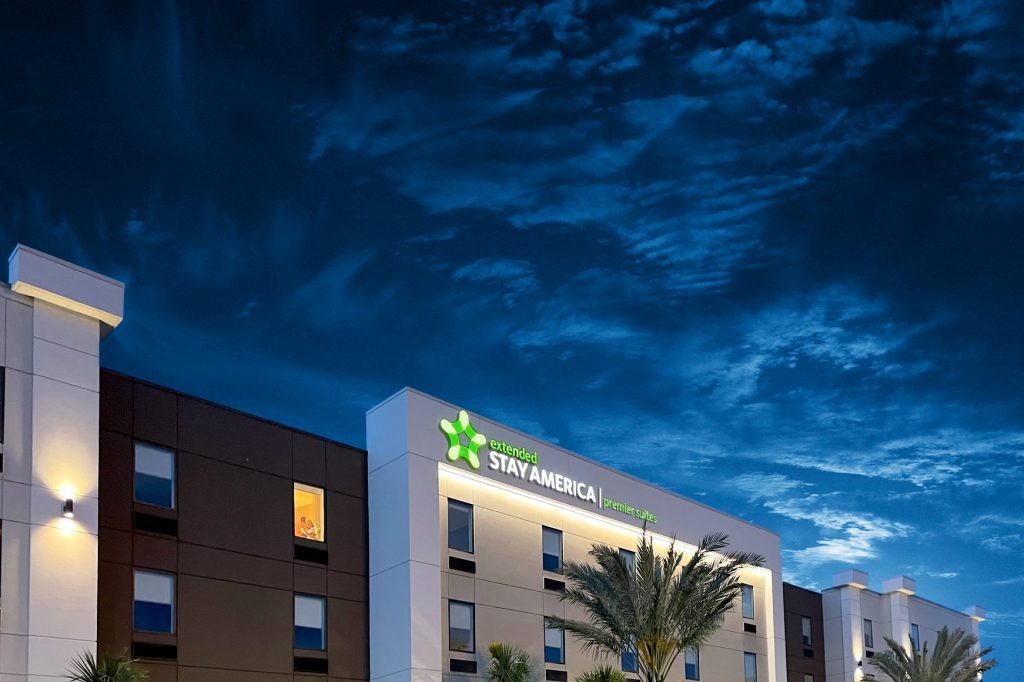Skift Take
Extended Stay America's launch of a higher-end brand isn't the sign of new owners Blackstone and Starwood Capital wanting some grandiose push into the upscale sector. It's about appealing to a segment of business travelers who may not have considered the brand as an option in the past.
Brand bloat isn’t a concern for hotel executives in the extended-stay hotel sector.
Extended Stay America launched a higher-end brand this summer with the ink barely dry on Blackstone and Starwood Capital’s roughly $6 billion acquisition of the company. The new brand, Extended Stay America Premier Suites, targets a more premium segment than the economy and mid-scale sectors associated with the current Extended Stay America portfolio.
The brand addition, in the works since before the pandemic, is the latest boost to extended-stay hotels after the sector outperformed the rest of the hotel industry during the pandemic due to its client base of essential workers and people needing temporary housing. It also fuels Extended Stay America’s plans for growth in the coming years.
“It’s a very diverse business. Extended Stay customers are not monolithic,” said Extended Stay America CEO Bruce Haase in an interview with Skift. “The interesting thing that we saw during the pandemic that helped us navigate through tougher times like that is, when there’s disruption in the economy or disruption in people’s lives, that creates a need for housing.”
Extended Stay America’s portfolio, which includes the namesake brand as well as Extended Stay America Suites, could “reasonably” swell from the roughly 650 properties currently to 1,000, Haase added. Extended Stay America Premier Suites is starting with 25 properties, and Haase didn’t offer specifics on how large that brand specifically could get.
The Premier Suites concept has been in the works for more than a year and moved forward after company leaders saw consumers were willing to pay for a more premium experience. The brand differentiates from the other two Extended Stay flags with upgraded design and bedding elements as well as larger televisions and storage space.
Premier Suites was expected to have a roughly $15 premium on daily rates from the company’s existing brand price points, Haase said earlier this year on an investor call.
Future growth of the brand will stem from a mix of new construction as well as converting existing Extended Stay America hotels into the Premier Suites affiliation.
“We are the Kleenex of the segment,” Haase said in reference to Extended Stay America’s brand recognition. “We saw there were some adjacent market segments sort of just above where we set a price point that had a bit more of a corporate customer [and] a bit of a shorter-term stay profile that we thought we could attract.”
The company also sees future growth stemming more from franchise opportunities, which is a relatively newer development given Extended Stay America owns a bulk of its own real estate. But there isn’t a huge rush to start opening a massive wave of new hotels just because there is a new ownership structure at the extended-stay brand.
“This is our launch phase,” Haase said. “It makes a lot of sense versus a huge leap above where we are now.”
He didn’t divulge much regarding how much impact Blackstone and Starwood Capital would have on the company’s growth plans beyond noting each investment group’s prior experience in the extended-stay sector and that they’d “add a lot of value to the business.”
Blackstone owned Extended Stay America twice before, and Starwood Capital owns the InTown Suites chain of extended-stay hotels.
The Many Faces of Extended Stay
The segmenting out of the extended-stay sector isn’t a new concept. Sonesta International Hotels Corp. became one of the largest U.S. hotel companies practically overnight earlier this year by acquiring RLH Corp., the parent company of Red Lion Hotels.
It also suddenly had overlapping extended-stay hotel brands: Sonesta’s ES Suites brand as well as RLH’s GuestHouse Extended Stay, Americas Best Value Inn, and Knights Inn all operated within the sector at the time of the brand integration. But rather than change course at some of these brands, Sonesta doubled down.
Given the strength of the sector during the pandemic, Sonesta CEO Carlos Flores told Skift in March he saw opportunity in offering multiple extended-stay brands at different price points.
“We’re making sure we’re good custodians of the brand and mining out all that value,” he added. “When we have great brands, we want to frack out as much value as possible.”
Haase noted Extended Stay America still plans to focus primarily on middle-market customers rather than chase a major upscale expansion. While Extended Stay Premier Suites may attract more business transient customers, the lion’s share of Extended Stay America’s business relies on guests who stay a week or more at the company’s original, namesake brand.
The push into a higher-end offering is more about having a comprehensive line-up of brands.
“We have all sorts of customers, from construction workers to folks that have lived with us for a longer period of time and all the way to corporate customers,” Haase said. “This business is an underserved business.”
Have a confidential tip for Skift? Get in touch
Tags: blackstone, coronavirus, coronavirus recovery, extended stay america, starwood capital
Photo credit: Extended Stay America's new brand is the first big move for the company following its $6 billion takeover by Blackstone and Starwood Capital. Extended Stay America

